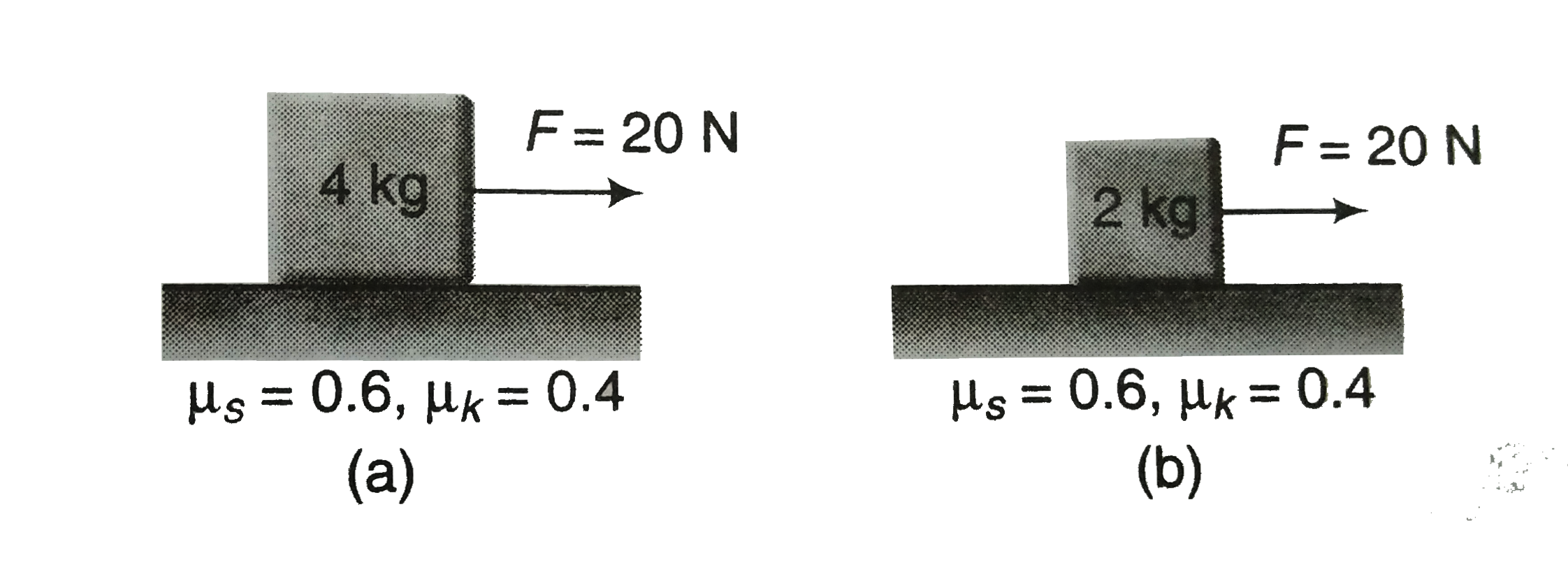In the sitution shown in figure there is no friction between 2kg and ground.

a. For what maximum value of force F can all three blocks move together?
b. Find the value of force F at which sliding starts at other rough surfaces.
c. Find acceleration of all blocks, nature and value of friction force for the following values of force F (i) 10N (ii) N and (iii) 25N
Friction between blocks AandB
fl1=fk1=0.5×1×g=5N
Friction force between blocks B and C
fl2=fk2=0.2×(1+2)×g=6N
maximum posible accceleration of blocks A can be
aA,max=0.5g=5ms−2
Maximum posible accceleration of blocks C:
aC.maxfl22=62=3ms−2
For the entire system to move together, we have to take lesser ecceleration
a. Maximum force F that can be applied for the entire system to move togather : Fmax=mtotala
⇒Fmax=(1+2+2)×3=15N
b. Sliding will start between blocks B and blocks C if F>15N
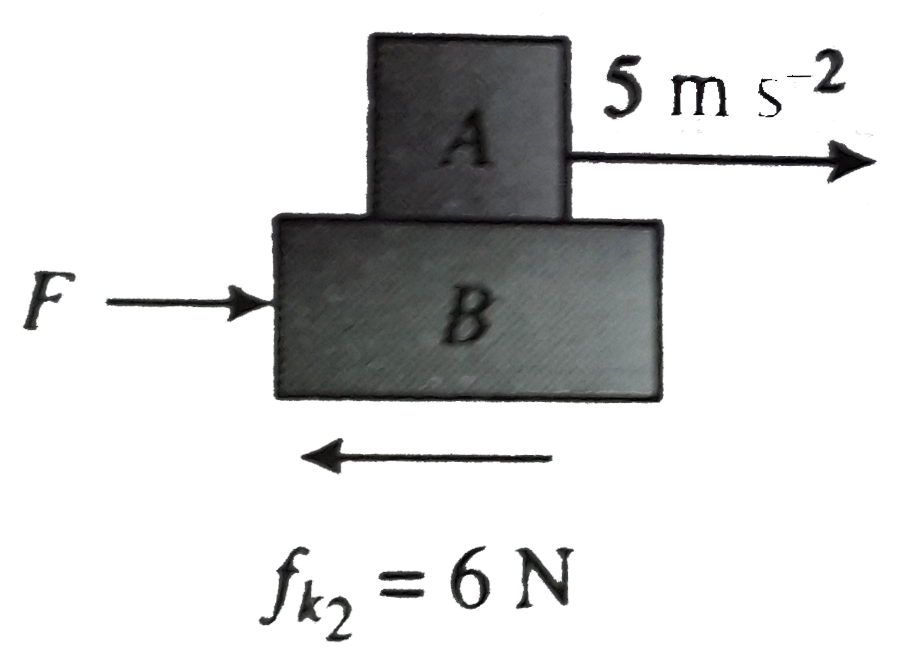
For sliding to start between blocks A and blocks B : This will accur when acceleration of combined blocksA and blocks B will exceed5ms−2
F−fk2_=(mA+mB)a
F−6=(1+2)×5⇒F=21N
c. i F=10N<15N , so entire system will move together with common acceleration
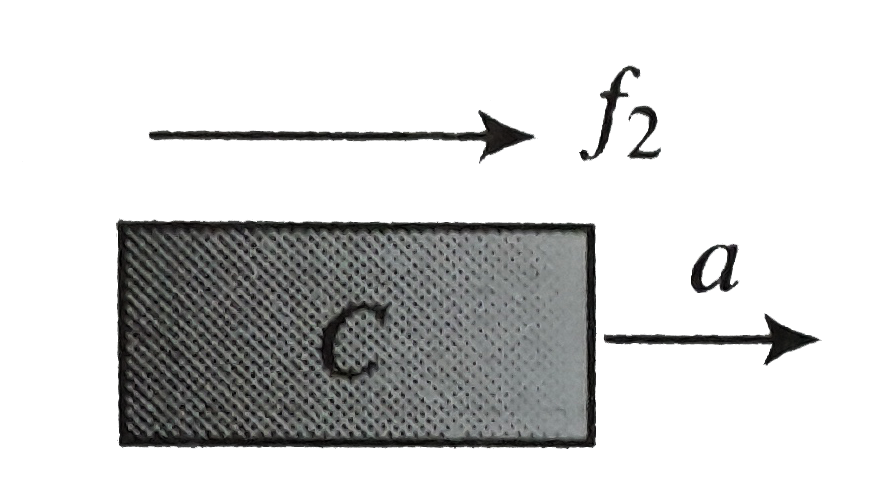
a=101+2+2=2ms−2
Friction between blocks B and blocks C
f2=2a=2×2=4N
Friction between blocks A and blocks B
f1=1×a=1×2=2N
ii . F=18N, here 15N<F<21N, so sliding start between blocks B and blocks C and not between blocks A and B
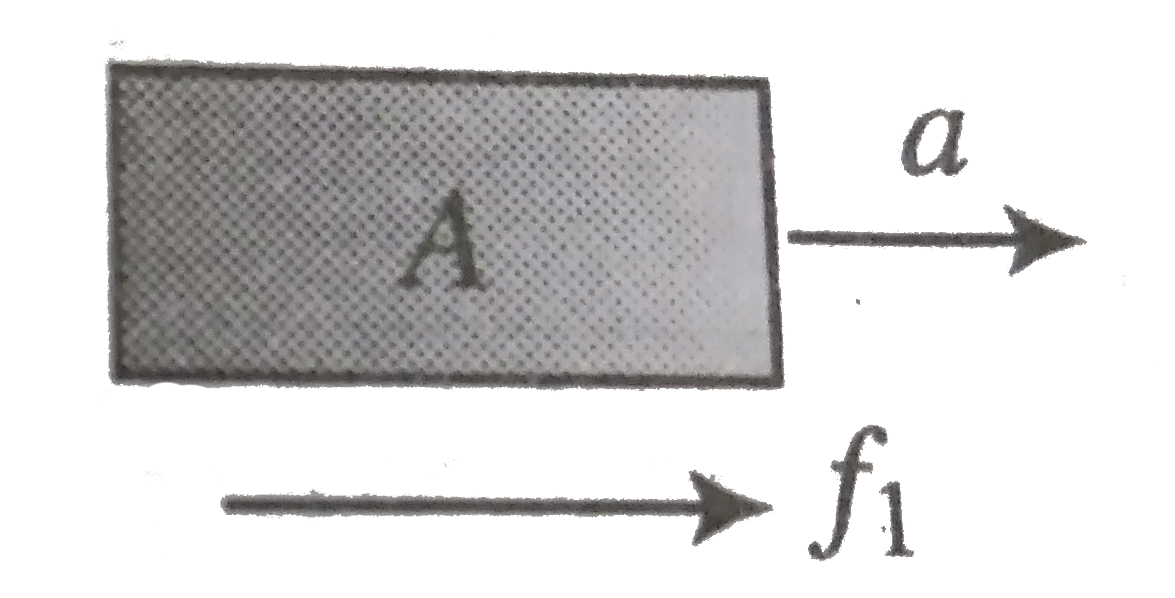
Acceleration of blocks C
a=−fk2/m=6/2=3ms−2
Acceleration of blocks A and B
a=18−61+2=4ms−2 Friction between blocks C and ground is
fk2=6N
Friction between blocks A and B:
f1=1×4=4N
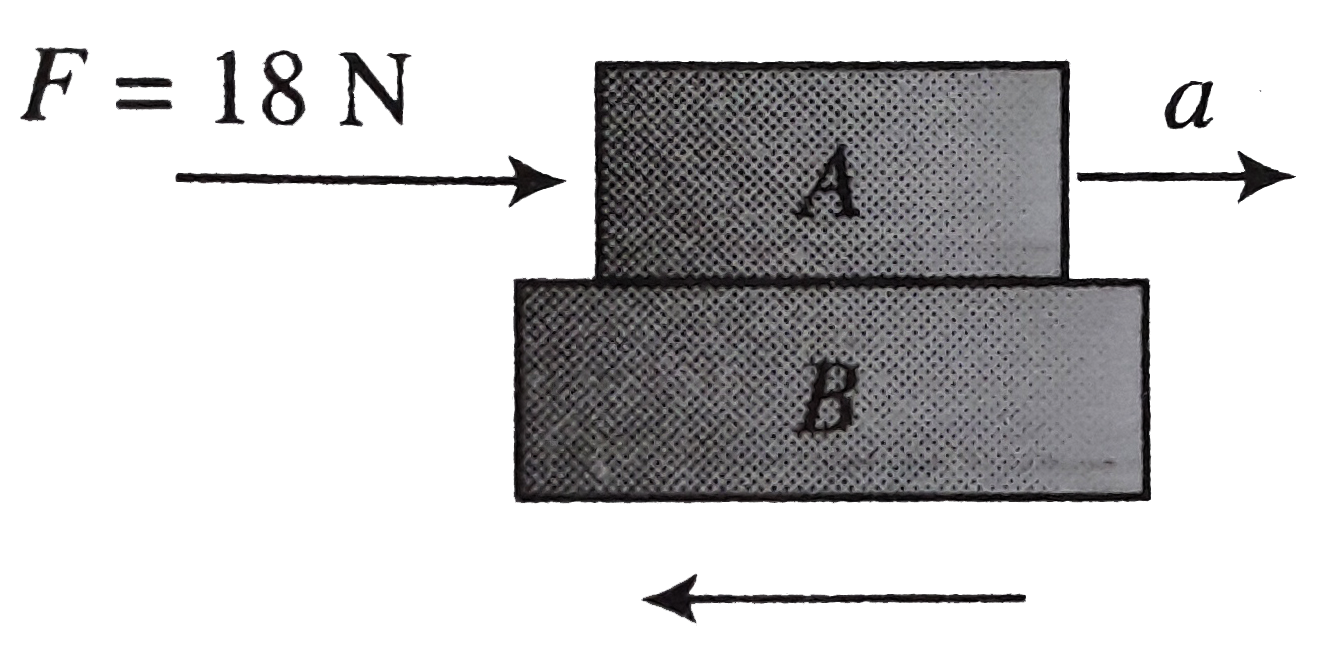
iii F=25N>21N, so sliding occure at all the contact surface friction between blocks A and B is fk1=5N 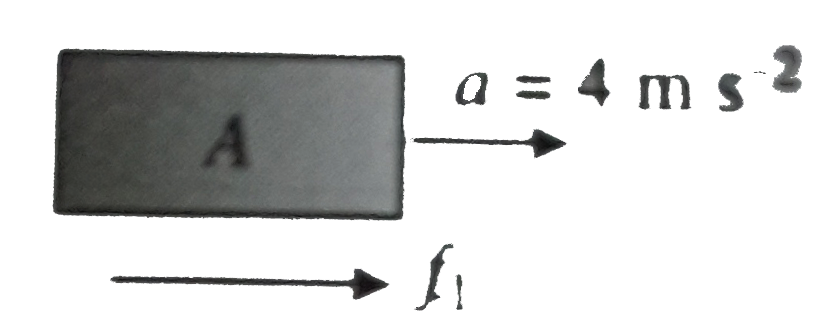
Friction between blocks B and C is fk2=6N
Accelerations of blocks A and B are their maximum possible acceleration
Acceleration of block B :
a=25−5−62=7ms−2
Topper's Solved these Questions
- BOOK - CENGAGE PHYSICSCHAPTER - NEWTON'S LAWS OF MOTION 2EXERCISE - Exercise 7.125videos
NEWTON'S LAWS OF MOTION 2
- BOOK - CENGAGE PHYSICSCHAPTER - NEWTON'S LAWS OF MOTION 2EXERCISE - Exercise 7.216videos
NEWTON'S LAWS OF MOTION 2
- BOOK - CENGAGE PHYSICSCHAPTER - NEWTON'S LAWS OF MOTION 2EXERCISE - Integer type1videos
NEWTON'S LAWS OF MOTION 2
- BOOK - CENGAGE PHYSICSCHAPTER - NEWTON'S LAWS OF MOTION 1EXERCISE - Integer5videos
NEWTON'S LAWS OF MOTION 1
- BOOK - CENGAGE PHYSICSCHAPTER - PROPERTIES OF SOLIDS AND FLUIDSEXERCISE - INTEGER_TYPE2videos
PROPERTIES OF SOLIDS AND FLUIDS
Similar Questions
Knowledge Check
- Question 1 - Select One
Find the maximum value of force F such that the block shown in the figure does not move
 A20 NB10 NC12 ND15 N
A20 NB10 NC12 ND15 N - Question 2 - Select One
What is the maximum value of the force F such that the block shown in the arrangement, does not move ?
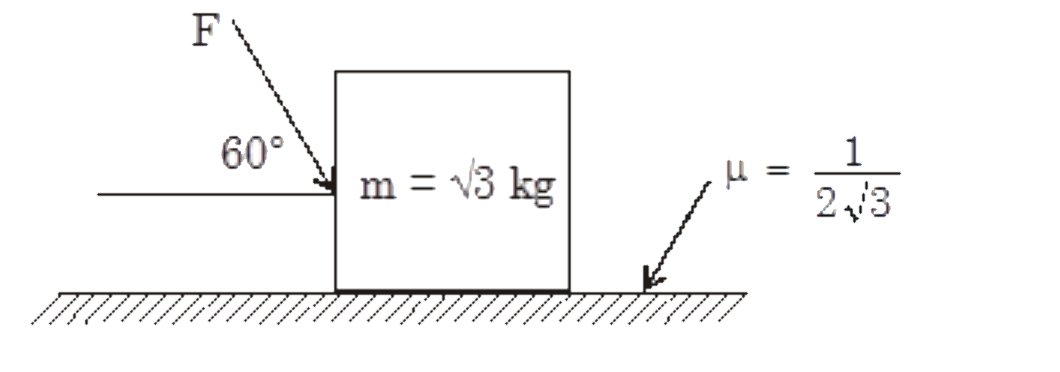 A15 NB5 NC10 ND20 N
A15 NB5 NC10 ND20 N - Question 3 - Select One
What is the maximum value of the force F such that the block shown in the arrangement, does not move?
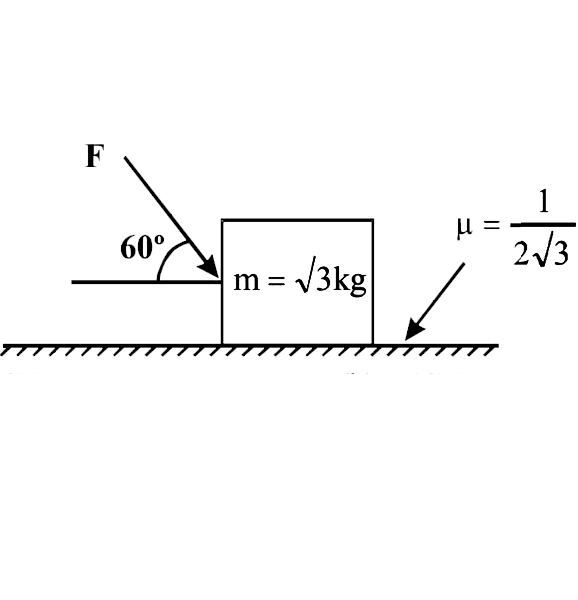 A20NB10NC12ND15N
A20NB10NC12ND15N
What is the maximum value of the force F such that the block shown in the figure does not move?
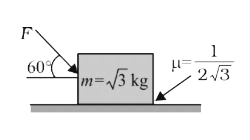 View Solution
View SolutionThe coefficient of friction between the blocks are μs=0.3 and μk=0.2. (a) Find the maximum value of F so that the blocks move together. (b) If force F is twice the value found in (a), find the acceleration of each block.
 View Solution
View SolutionConsider the situation shown in the figure . The coefficient of friction between the blocks is μ. Find the minimum and the maximum force F that can be applied so that two blocks move together.
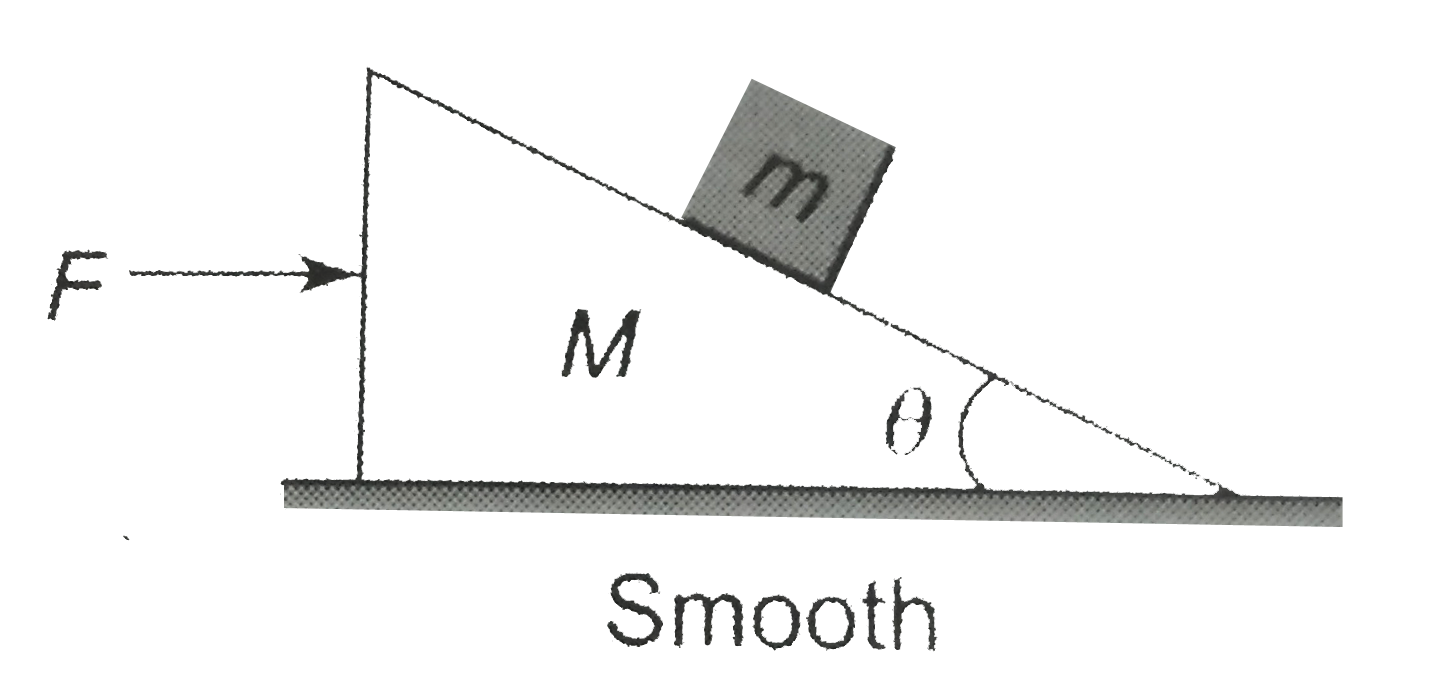 View Solution
View SolutionIn the situation shown in figure-2.99.
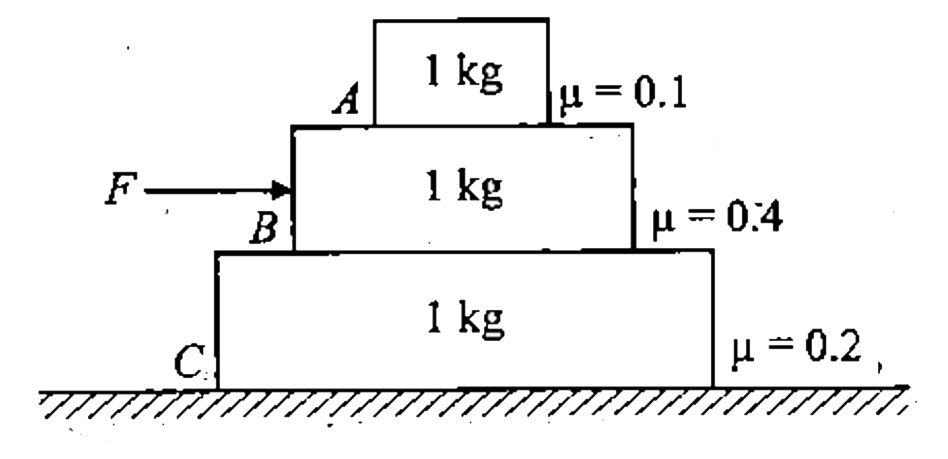
(a) For what minimum value of the force F will the system or any part of it start to move ?
(b) Find the values of force F when slipping starts between (i) A and B and (ii) B and C. Take g=10m/s2View SolutionIn the situation shown in fig
a. What minimum force F will make any part or whole system move?
b. Find the acceleration of two blocks and value of friction at the two surface if F=6N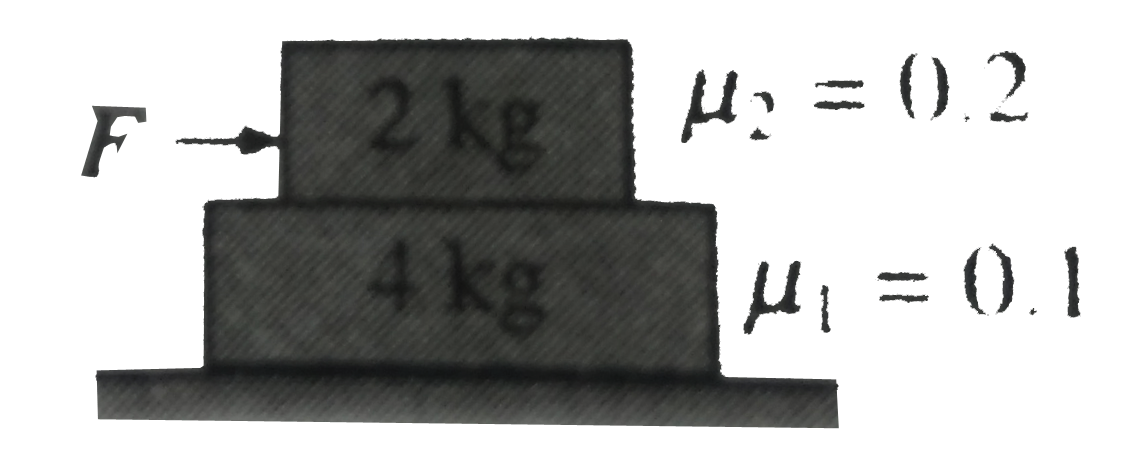 View Solution
View Solution


